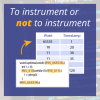- Reduce effort identifying which code to optimize using color-marked source code
- instantly find code that is the source of timing problems with both high watermark path and WCET path clearly marked.
- focus testing on key sections of code and reduce test-time on expensive rigs.
- easily check test coverage to identify code that is not executed code during testing.
- Fully instrument code with minimal overheads using RapiTime’s unique Idpack feature, which allows instrumentation to be implemented with writes to as few as 2 bits of output ports.
- Demultiplex pre-emptive code into several traces, one for each task or thread.
- Annotate mutually exclusive paths to improve to the accuracy of the WCET analysis.
- adds instrumentation to source code
- measures a range timing data for software applications
- calculates worst-case execution times (WCET)
- determines code coverage
- provides easy-to-read charts and tables of timing data to guide your optimization activities
- enables ongoing assessment of optimization impact.

 Rapita System Announces New Distribution Partnership with COONTEC
Rapita System Announces New Distribution Partnership with COONTEC
 Rapita partners with Asterios Technologies to deliver solutions in multicore certification
Rapita partners with Asterios Technologies to deliver solutions in multicore certification
 SAIF Autonomy to use RVS to verify their groundbreaking AI platform
SAIF Autonomy to use RVS to verify their groundbreaking AI platform
 What does AMACC Rev B mean for multicore certification?
What does AMACC Rev B mean for multicore certification?
 How emulation can reduce avionics verification costs: Sim68020
How emulation can reduce avionics verification costs: Sim68020
 Multicore timing analysis: to instrument or not to instrument
Multicore timing analysis: to instrument or not to instrument
 How to certify multicore processors - what is everyone asking?
How to certify multicore processors - what is everyone asking?
 Certifying Unmanned Aircraft Systems
Certifying Unmanned Aircraft Systems
 DO-278A Guidance: Introduction to RTCA DO-278 approval
DO-278A Guidance: Introduction to RTCA DO-278 approval
 ISO 26262
ISO 26262
 Data Coupling & Control Coupling
Data Coupling & Control Coupling
 DASC 2025
DASC 2025
 DO-178C Multicore In-person Training (Fort Worth, TX)
DO-178C Multicore In-person Training (Fort Worth, TX)
 DO-178C Multicore In-person Training (Toulouse)
DO-178C Multicore In-person Training (Toulouse)
 HISC 2025
HISC 2025










